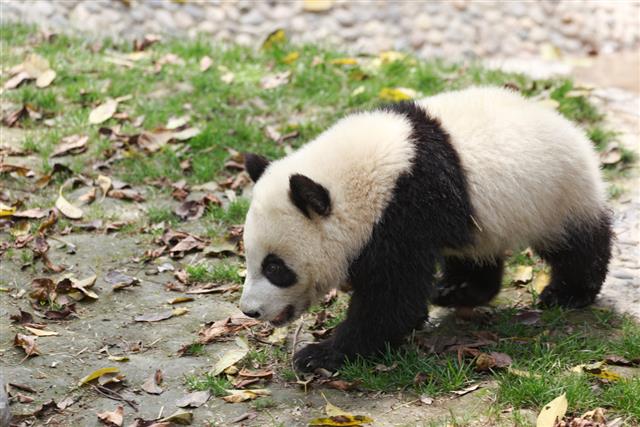
The giant panda behavior is quite different from other animals living in the same biome. Living in mountain ranges in different Chinese provinces, this mammal has adapted quite well to is new home from its previous habitat in the lowlands.
A cuddly and docile animal, the giant panda is recognized universally as an icon for endangered animals. The giant panda is one of the most fascinating species in the kingdom Animalia. Scientifically called Ailuropoda melanoleuca, this mammal belongs to the bear family.
Due to its fur color the panda is sometimes associated with the raccoons. With its rotund body this animal can be easily mistaken as being clumsy. But in reality it is not so. In fact it is quite deft while protecting its territory from trespassers, or while escaping from predators. It is the mannerism of the giant panda, which makes it stand out from the rest of the animals.
Behavior of the Giant Panda
The meek giant panda is a very interesting animal to observe in terms of its behavior. Usually, secluded or solitary from the rest, the giant panda is seen in company, only during the mating season. Apart from this, the female is seen with her cubs.
- The habitat of the giant panda is mainly forests which have rich bamboo growth. The panda loves to live near places which have a clear running brook and is laden with bamboo. Pandas do not build homes or dens, except for their cubs. A terrestrial being, the panda marks its territory by clawing trees, with scent and also by spraying urine to differentiate its habitat from others.
- The giant panda happily feasts on tender bamboo shoots, which is its favorite food, along with leaves, roots and tubers. Being omnivorous in nature, it also feeds on fish, rodents and insects as well. Occasionally, the giant panda may also eat flowers, green corn, tufted grass, honey and vines.
- Pandas prefer solitude over company and can be seen roaming around all alone. However, the only times when the pandas, especially the males, can be seen in groups is for mating. The female takes care of the cubs and once the cub turns 3 years old, it leaves the mother and fends for itself.
- The only time the panda is active and moves about, looking for food, is in the morning and at sunset. The rest of the day is spent in sleeping. This is because the panda feeds on food that is low in nutrition and does so to conserve energy.
- Unlike other members of the bear and raccoon family, the giant panda does not hibernate. This is because the panda does not get enough nutrients from the food it eats and hence cannot conserve it in its body for further use. This makes it a poor candidate for hibernation. So during the cold, winter months, the pandas move to lower altitude places where they can be warm, and during the summers they relocate to higher places, to remain cool.
- The breeding season of the giant panda is between the months of March and May. Following a gestation period of 3 to 5 months, the female gives birth to one cub, which is blind. Only after six or eight weeks can the cub open its eyes. In case of twins, only one cub survives. Once the cub becomes three months old, it begins to move around, along with its mother.
- The natural predators of the giant panda are wolves, leopards and jackals. Though on land, the panda may resemble a slow moving and clumsy animal, it can climb trees with precise dexterity when it feels threatened by enemies. It can quickly reach the top on all fours in swift movements.
Due to the depletion of its natural habitat and encroachment, the giant panda is bred in captivity since they have become endangered. It is necessary to save the shy animal and the WWF symbol from becoming extinct.









